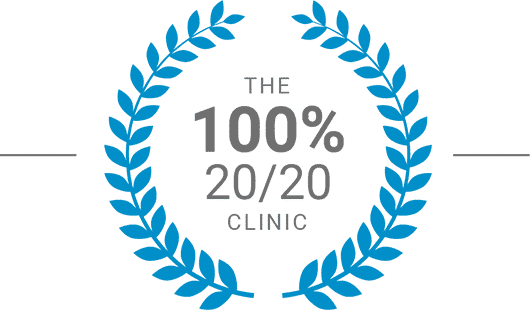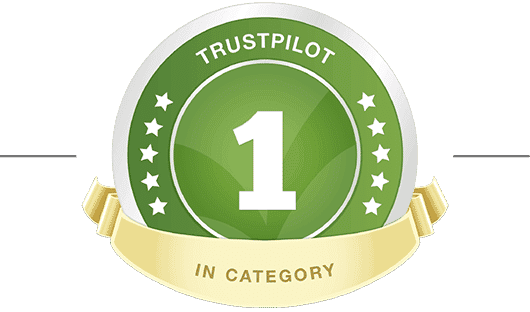Book Your Free Consultation
Mr David Allamby
MD, FRCOphth, FRCS
The world of vision correction has come a long way over the years, and one of the most remarkable advancements in this field is LASEK.
LASEK (laser-assisted sub-epithelial keratomileusis), also known as PRK, has revolutionised how we address vision problems for those with high prescriptions and thin or weaker corneas.
Suppose you have been struggling with the inconveniences of glasses or contact lenses, and your prescription makes you ineligible for other treatments. In that case, LASEK eye surgery may be a life-changing solution.
However, it’s crucial to determine whether you are a suitable candidate for the procedure as there are several factors that need to be considered to ensure the best possible outcome.
You are eligible if you meet the following criteria, meaning that you are highly likely to be suitable for LASEK eye treatment:
Are you over 18 years of age?
Has your prescription remained consistent for at least six months, ideally 12 months?
Are your eyes otherwise healthy?
You will need a full consultation and eye examination to determine more accurately if you are eligible for LASEK.
Book your free telephone consultation today, and a member of our team will be happy to talk you through the treatment options based on your individual circumstances.
In the forty years since eye corrective surgeries became available, we have developed an extensive understanding of who is most suitable for LASEK.
Factors that impact LASEK eligibility are:
The minimum age of LASEK consideration is 18.
Patients in their 20s and 30s tend to correct nearsightedness (myopia), potentially together with a misshapen cornea (astigmatism). Those in their 40s, 50s, and 60s often seek treatment for age-related close-up vision loss (presbyopia).
However, the average age is rising as more screen time leads to an increase in short-sightedness.
LASEK is an alternative to LASIK for those whose prescription is too high for other treatments to work effectively and predictably.
The prescription for your glasses or contacts must have stayed the same for at least six months before treatment.
Chronic, preexisting eye dryness can increase your chances of having post-op complications after LASEK treatment. That’s why it’s important to be aware of the preconditions leading to dry eyes.
Fortunately, there are several treatments available to improve eye dryness before surgery.
Women tend to experience eye dryness more than men by at least half, according to a US study. Postmenopause, pregnancy, HRT, and birth control can all be causes of dry eye disease in women.
Certain conditions, such as rheumatoid arthritis, thyroid disease, or lupus.
High levels of screen time.
Medications such as beta-blockers or immunosuppressants.
Smoking tobacco products.
Dry eye disease is a growing problem, with 25% of eye clinic patients reporting eye dryness.
Many people, especially those with extreme prescriptions, take their glasses off when on a date or getting their picture taken; those seeking LASEK can be looking for anything from improved self-confidence to a simple improvement in vision.
However, this means that motivations, expectations, and adherence to guidelines are vital when we’re assessing your suitability for LASEK:
Your expectations should be realistic, as no medical procedure can guarantee 100% outcomes.
A willingness to follow medical advice is essential, as LASEK requires self-administered aftercare and compliance with treatment plans.
If you are a smoker, undergoing LASEK means you will benefit from stopping smoking at least a month before and after treatment. It’s not essential, but may help. This is because smoking cigarettes is linked with multiple clinical eye conditions, such as dryness (which can be exacerbated by LASEK for up to six months).
Type Of Condition | Why Can I Not Get LASEK? |
|---|---|
Autoimmune diseases: | These conditions prevent the body from healing, a vital post-op stage for LASEK. Patients with HIV may be eligible if they have an excellent immune cell count. |
Inflammatory diseases: | This is due to an increased risk of corneal complications. |
Light-sensitive epilepsy | Patients must remain still during the procedure. Patients with epilepsy who are not triggered by light or have been inactive for 12 months can be considered. |
Glaucoma, cataracts, nystagmus, blepharitis, herpes, other eye disorders or diseases | Aside from a refractive issue and a thin cornea, your eyes must be healthy and stable for LASEK surgery to be safe and effective. Your eyes will be assessed for these conditions and their potential to impact LASEK treatment. |
Several medications are associated with LASEK risks for various reasons:
Type Of Medication | Why Can I Not Get LASEK? |
|---|---|
Immunosuppressants | These medications impact how the body heals and can lead to LASEK complications. |
Anti-inflammatory medications | These medications impact how the body heals and can lead to LASEK complications. |
Drugs which decrease tear production: Beta-blockers, roaccutane, isotretinoin | These medications can lead to dry eyes, exacerbating the side effects of LASEK during the healing process. |
Oral steroids | Patients taking steroids may have conditions which increase the likelihood of developing infections or other complications. |
These are not exhaustive lists; checking with your optometrist during your assessment with us is essential to attaining the best course of action.
To be eligible for LASEK, you must be over 18, have an extreme eye prescription and a thin cornea, and be in good general health.
If you have an autoimmune disorder or a chronic condition like diabetes, you are likely not suitable for LASEK. If you are pregnant you may have to wait for treatment.
Your prescription must have been stable for at least six months (and ideally 1 year) to be considered for LASEK.
LASEK PRK surgery costs depend on several factors, including the clinic you choose. Focus Clinics offers a free finance calculator to check how much LASEK will cost for you.
Book a FREE* Consultation
To get a better idea of how we can help you, and also the different types of services we offer, book a consultation now.

100% 20/20 vision
Focus Clinic has a remarkable 100% success rate for 20/20 vision. We know of no other clinic that has matched these results. There is a big difference between, for example, 98% and 100% success, especially if you are in the 2%.

10 year guarantee
Your 10 Year Guarantee means you can return at any time if you have additional questions on the quality of your vision. If you have distance vision correction for short-sight then any repeat laser eye treatments to correct a return of myopia in the first 10 years are included free of charge.*

Most trusted eye treatment clinic
We have the highest trust rating of any ‘eye treatment’ rated clinic, according to independent review site TrustPilot. With an outstanding 9.9 out of 10, when it comes to your eyes, choose the clinic that actual patients trust the most.
*Terms and conditions apply, excludes any age-related changes and conditions unrelated to the primary treatment